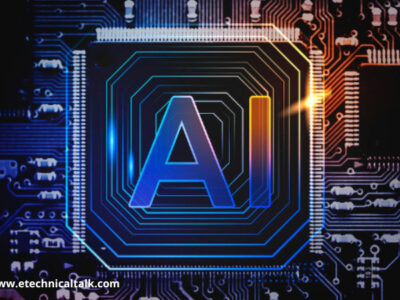Imagine a future where your vehicle is more than just a means of transport – it’s a smart, communicative partner on the road. Does this sound more like a scene from your favorite science fiction movie?
Well, this all has turned into a reality now!
Over the past decade, the rise of electric vehicles (EVs) has been nothing short of a phenomenon. With this surge, we’ve witnessed a parallel growth in automotive IoT, too. These are vehicles equipped to record and monitor every aspect of their surroundings, both inside and outside. Stats reveal that there will be 400 million+ connected cars in operation by the year 2025.
But what exactly is Connected Vehicle Technology, and how does IoT (Internet of Things) power this exciting evolution?
Stress less; we have answers for all your concerns below. This blog will even navigate you through challenges and solutions in the implementation of IoT in vehicles.
1 – What is Connected Vehicle Technology?
Connected Vehicle Technology (CVT) is a cutting-edge advancement. It has reshaped the automotive industry.
Imagine your car chatting with everything around it. And by everything, we mean the traffic lights, parking lots, and other cars on the road. That’s the essence of Connected Vehicle IoT. It’s all about vehicles that can “talk” and “listen” to their surroundings using the magic of the internet, wireless networks, and data sensors.
Now, why does CVT matter?
Well, imagine a world where cars can predict and avoid accidents, find the nearest charging station for electric vehicles, or even just play your favorite song when you’re feeling blue. That’s the promise this technology holds. But, of course, CVT is much more complex than it seems. And this is where the Internet of Things (IoT) comes into play.
2- How IoT Powers Connected Vehicles
The Internet of Things (IoT) is like the secret sauce in the recipe for Connected Vehicles solution. It’s what turns a regular car into a smart, communicative machine.
2.1- The Role of IoT in Powering Connected Vehicles
- Data Collection: Every second, connected vehicles’ IoT sensors collect vast amounts of data – from engine performance to environmental conditions. This data forms the base layer of our connected vehicle ecosystem.
- Vehicle-to-Everything (V2X) Communication: IoT enables V2X communication. This means vehicles can communicate not just with each other (V2V) but also with infrastructure like traffic lights (V2I), pedestrians (V2P), and even cyclists.
- Predictive Maintenance: Gone are the days of unexpected breakdowns! IoT allows for real-time diagnostics. So, your IoT car can tell you when a part is about to fail long before it does.
- Personalized Experience: From adjusting your seat to your preference to recommending routes based on past journeys, IoT connected vehicle learns from driver behavior to provide a tailored driving experience.
- Safety Enhancements: IoT devices can sense and predict potential hazards, alerting drivers in real-time. Think of it as your car having its sixth sense.
- Eco-friendly Driving: Connected vehicles in IoT can guide drivers on the most fuel-efficient routes, optimize engine performance for better fuel economy, and even locate nearby electric charging stations for EVs.
- Seamless Connectivity: IoT auto ensures that drivers and passengers stay connected to the digital world, be it through navigation systems, music streaming, or even remote work applications.
3- Challenges & Solutions in Implementation
While the prospects of IoT in connected vehicle platforms are exciting, they come with their fair share of challenges. Let’s dive into these roadblocks and the ingenious solutions being crafted to overcome them.
3.1- Data Privacy and Security:
Challenge: Connected vehicles generate a treasure trove of data, from your driving habits to personal information. The fear of this data falling into the wrong hands looms large.
Solution: Manufacturers and tech giants are fortifying their cybersecurity defenses. Think of it as outfitting your car with state-of-the-art digital locks and alarms to safeguard your data.
3.2- Network Connectivity:
Challenge: Just as your phone loses signal in certain spots, connected cars can experience the same hiccup, affecting features that rely on data connectivity.
Solution: The forthcoming 5G technology promises faster, more reliable internet connections. This will ensure your car remains linked to the digital realm even in remote areas. It’s like upgrading from a shaky phone signal to a super-speedy one.
3.3- Interoperability:
Challenge: IoT automotive involves various devices and technologies, and making them work seamlessly together can be quite a puzzle.
Solution: Technical and data standards are being developed to enhance interoperability. These standards ensure devices can communicate effectively and data can be understood by different systems.
3.4- Data Overload:
Challenge: Connected vehicles churn out mountains of data. Managing, storing, and processing this data efficiently can be overwhelming.
Solution: Advances in cloud and edge computing help tackle this. Cloud computing offers vast storage and processing power. On the other hand, edge computing allows some data processing to happen directly on devices, reducing the need to transmit and store all data in the cloud.
3.5- Regulatory and Legal Issues:
Challenge: The nascent nature of connected vehicle tech brings forth legal and regulatory uncertainties — from liability in self-driving car accidents to data-related legislation.
Solution: Government bodies, regulators, and industry stakeholders are diligently crafting legal and regulatory frameworks. Though complex, progress is underway.
3.6- User Acceptance:
Challenge: Not everyone is entirely comfortable with the idea of their vehicle being connected and their data being collected.
Solution: Addressing user concerns hinges on education and transparency. This means clear explanations of data collection and usage, coupled with demonstrating the tangible benefits of connected vehicle solutions, is key.
Final thoughts
The synergy between Connected Vehicle Technology and IoT is reshaping the automotive industry for good. This digital revolution enables cars to communicate, anticipate, and enhance our driving experiences.
However, with auto IoT innovation come challenges in data security, connectivity, and user acceptance. Thankfully, ongoing advancements in cybersecurity, 5G technology, and interoperability standards are paving the way for a brighter future.
For more interesting blogs go here:- etechnicatalk














